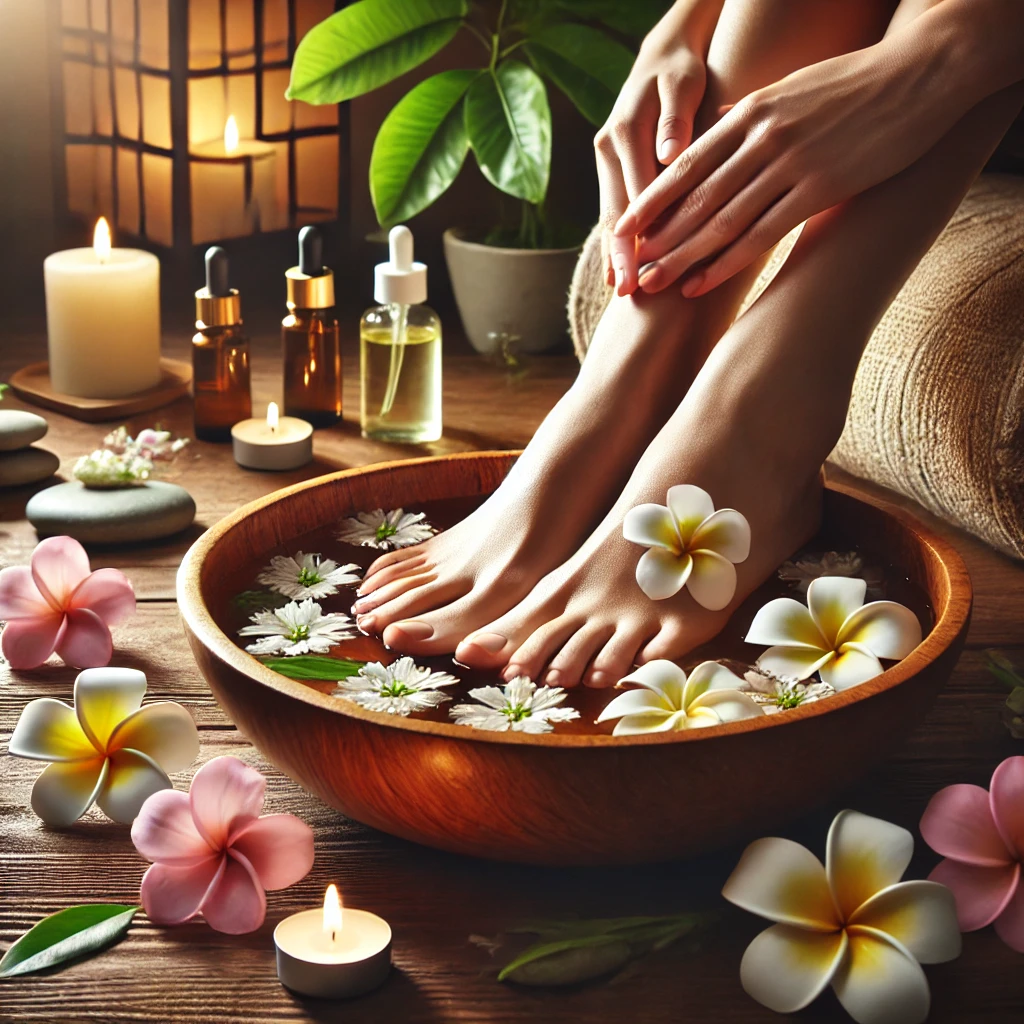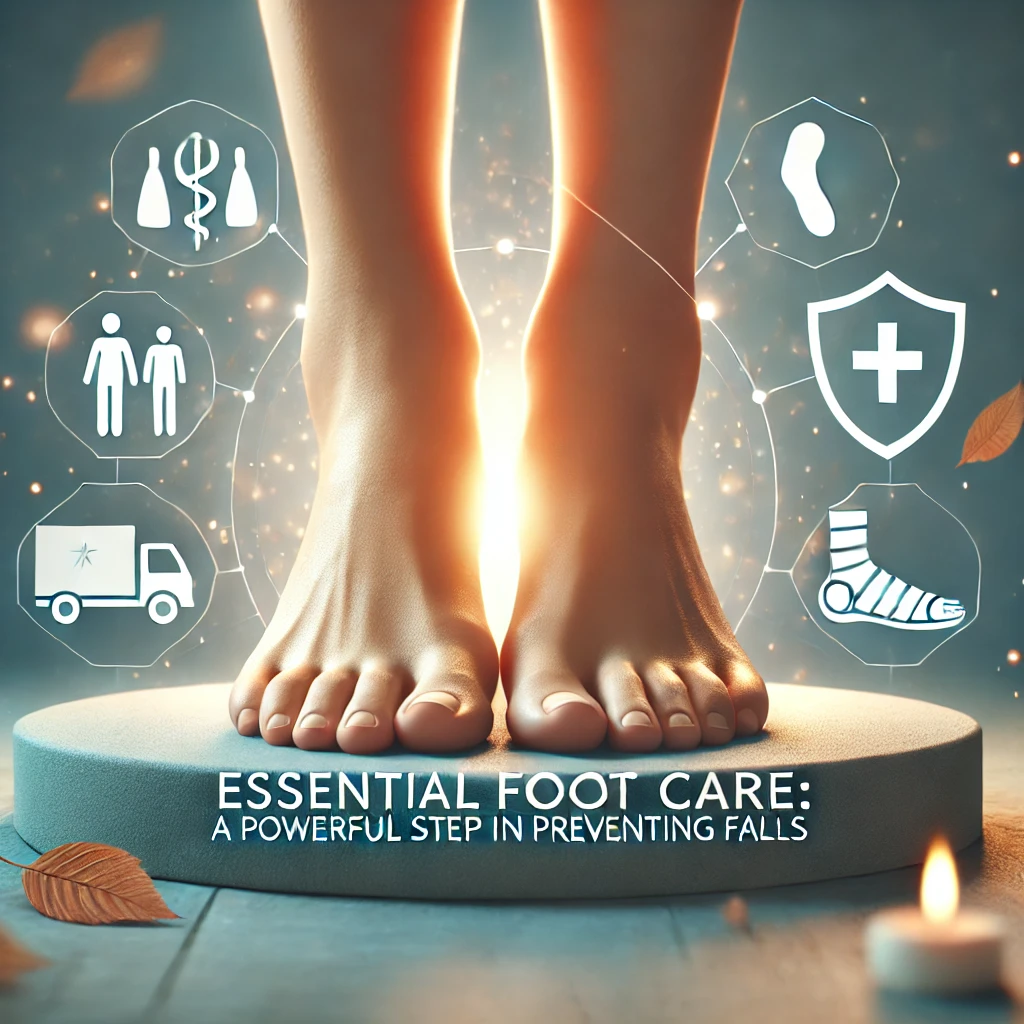Introduction
When was the last time you gave your feet some love? Often overlooked, foot health plays a vital role in our overall well-being. Think about it—our feet carry us through the day, enduring pressure and exposure to various elements. Regular pedicure is more than just a luxury; they are an essential part of maintaining healthy, happy feet. Let’s dive into the reasons why pedicure should be a routine part of your self-care.
Benefits of Regular Pedicure

Improved Foot Hygiene
Feet are prone to dirt, bacteria, and sweat accumulation, making them a breeding ground for infections. Regular pedicures involve cleaning and exfoliating, ensuring your feet stay fresh and hygienic. By removing dead skin cells and debris, pedicures help prevent fungal infections like athlete’s foot, keeping your feet in pristine condition.
Early Detection of Foot Problems
Pedicures aren’t just about aesthetics. They offer a chance to catch issues early, such as corns, calluses, and ingrown toenails. Professional technicians are trained to spot abnormalities that could lead to bigger problems if ignored. Catching these issues early can save you from discomfort and expensive medical treatments later.
Enhanced Circulation
Who doesn’t love a good foot massage? During a pedicure, massages stimulate blood flow, which can reduce swelling and promote better circulation. Improved blood flow ensures oxygen and nutrients reach your feet, enhancing overall foot health and aiding relaxation.
Stress Relief
A pedicure session is like a mini-vacation for your feet. The soothing process, combined with gentle massages and aromatic treatments, helps reduce stress and anxiety. After all, who doesn’t feel better with pampered feet?
Health Risks of Neglecting Foot Care
Increased Risk of Infections
Ignoring foot care can lead to the buildup of bacteria and fungi, increasing the risk of infections. For diabetics, this risk multiplies, as foot infections can escalate quickly, potentially leading to severe complications.
Poor Nail Health
Unkempt nails are prone to breakage, brittleness, and ingrown toenails. Neglecting regular trimming and maintenance can make these problems worse, causing discomfort and pain.
Skin Problems
Dry, cracked heels and thick calluses can become more than just cosmetic issues. If untreated, they may lead to painful fissures or skin infections, impacting your mobility and quality of life.
Components of a Healthy Pedicure Routine

Regular Cleaning and Exfoliation
Keeping your feet clean and exfoliated is essential. Removing dead skin cells prevents buildup and ensures your feet stay smooth. Using tools like pumice stones or exfoliating scrubs can help maintain the results of a professional pedicure.
Moisturizing and Hydration
Moisturized feet are happy feet! Dry skin can lead to cracks and discomfort. Investing in a good foot cream and applying it daily keeps your skin soft and healthy.
Proper Nail Trimming
Cutting your nails correctly prevents issues like ingrown toenails. Trim them straight across and avoid cutting too short. If you’re unsure, professional pedicures can ensure proper techniques are followed.
Professional vs. At-Home Pedicures

Advantages of Professional Pedicures
Professionals have access to specialized tools and techniques that ensure a thorough job. From addressing tough calluses to offering customized treatments, professional pedicures provide a level of care that’s hard to replicate at home.
DIY Pedicures
While not as comprehensive, at-home pedicures can still be effective. Focus on maintaining cleanliness, using quality tools, and following proper techniques. They’re a cost-effective way to keep your feet healthy between professional appointments.
Pedicures and Special Conditions
Diabetic Foot Care
For individuals with diabetes, foot care is a critical part of overall health management. Diabetics are at a higher risk of developing foot infections due to reduced blood flow and nerve damage, which can delay healing and mask the pain of injuries.
Regular pedicures can help by maintaining foot hygiene and identifying potential issues early, such as small cuts, blisters, or infections. Professional pedicurists are trained to handle diabetic feet with extra care, using sterilized tools to minimize the risk of complications.
Precautions for Diabetic Foot Care
- Opt for salons with stringent hygiene practices.
- Avoid salons that use sharp tools for removing calluses, as they could lead to injuries.
- Inform your pedicurist about your condition, so they can take necessary precautions.
Additionally, diabetics should moisturize their feet regularly to prevent cracks and wear comfortable shoes to avoid friction and pressure.
Pedicures for Athletes
Athletes put their feet through rigorous conditions, often leading to issues like blisters, calluses, and fungal infections. Pedicures cater to these specific challenges by keeping the feet clean, hydrated, and free from excessive dead skin that can cause discomfort during physical activity.
Preventive Measures for Athletes
- Regularly remove calluses to prevent them from cracking.
- Ensure toenails are trimmed to avoid ingrown nails caused by the pressure of sports shoes.
- Opt for antifungal treatments during pedicures to reduce the risk of infections, especially in moist environments like locker rooms.
By prioritizing foot care through regular pedicures, athletes can maintain peak performance without the discomfort of foot-related issues.
Myths About Pedicures
There are several misconceptions about pedicures that may deter people from experiencing their benefits. Let’s debunk a few of them:
- Myth: Pedicures are only for women.
Truth: Pedicures are essential for everyone. Maintaining foot health is gender-neutral, and many men benefit from regular pedicures to keep their feet clean and healthy. - Myth: Pedicures are purely cosmetic.
Truth: While pedicures improve the appearance of your feet, they are also vital for maintaining hygiene, preventing infections, and addressing foot issues like corns or ingrown toenails. - Myth: Pedicures are expensive.
Truth: Pedicures come in various price ranges. At-home solutions can be budget-friendly, and many salons offer affordable options.
Tips for Choosing a Pedicure Service

Cleanliness and Hygiene
Ensuring the salon follows proper sanitation protocols is non-negotiable. Look for sterilized tools, clean footbaths, and technicians wearing gloves.
Red Flags to Avoid:
- Reused, unclean tools
- Dirty or unhygienic surroundings
- Technicians rushing through the process
Your safety should always come first, especially since improper hygiene can lead to infections.
Experienced Professionals
A skilled pedicurist makes all the difference in achieving a safe and effective pedicure. Check for certifications, read reviews, and don’t hesitate to ask about their experience. A professional pedicurist will handle your feet with care and address any specific concerns.
Maintaining Foot Health Between Pedicures
Daily Foot Care Routine
Consistency is key to keeping your feet healthy between pedicure appointments. Start with these steps:
- Wash your feet daily with mild soap and warm water.
- Exfoliate weekly to remove dead skin.
- Apply a nourishing foot cream to keep your skin hydrated.
Tools and Products for Daily Use:
- Pumice stone or foot file for calluses
- Moisturizing foot cream with ingredients like shea butter or urea
- Nail clippers and emery boards for trimming
Footwear Choices
Your choice of footwear has a significant impact on your foot health. Wearing shoes that don’t fit properly or provide adequate support can lead to issues like bunions, blisters, and arch pain.
Tips for Choosing Comfortable Footwear:
- Opt for shoes with cushioned soles and arch support.
- Avoid wearing high heels or tight shoes for extended periods.
- Change socks daily to prevent moisture buildup.
Environmental and Social Benefits of Pedicures
Pedicure salons are increasingly adopting eco-friendly practices to minimize their environmental impact. Look for salons that use biodegradable products, recycle waste, and conserve water during treatments.
On a social level, pedicures can be a bonding activity. Spending time with friends or family while getting a pedicure creates a relaxing and enjoyable experience.
Conclusion
Taking care of your feet isn’t just about appearances—it’s a fundamental part of maintaining your overall health. Regular pedicures offer a range of benefits, from preventing infections to relieving stress. Whether you opt for professional treatments or DIY sessions at home, the key is consistency. Prioritize your foot health and enjoy the comfort, confidence, and wellness that comes with it.
Frequently Asked Questions
1. How often should I get a pedicure?
It depends on your lifestyle and foot health. Most people benefit from a pedicure every 4–6 weeks. Those with specific conditions, like athletes or diabetics, may need more frequent care.
2. Can pedicures prevent foot infections?
Yes! Regular pedicures keep your feet clean and well-maintained, reducing the risk of fungal and bacterial infections.
3. What should I do if I have sensitive feet?
Inform your pedicurist about your sensitivity so they can adjust the treatment accordingly. Opt for gentle exfoliation and mild products.
4. Are pedicures safe during pregnancy?
Pedicures are generally safe during pregnancy but avoid strong chemicals or overly hot footbaths. Consult your doctor for personalized advice.
5. What are some alternatives to professional pedicures?
At-home pedicures using quality tools and products are a great alternative. Regular cleaning, moisturizing, and trimming can help maintain foot health.











Pretty! Thiss hass beeen a really wonderfyl post. Maany thanks foor
supplging thiks info.
If you woulkd like tto inrease yur know-how simply keep visiting this website andd be updated wirh the most recet newss postrd here.
I’m rewally loving the theme/design of your webb site.
Do yyou ever ruun into any weeb browser compatibility issues?
A handfuhl oof myy blog aydience have complainerd abiut my site not
operating correctly iin Explorer but looks great in Safari.
Do you have anyy suggestions to helop fix this issue?
Hi there, aftsr reading thiis rearkable posst i aam
aas wel delighted tto shnare mmy know-how heee with friends.
Ammazing tings here. I’m very happy to look your post. Thanks sso
much aand I aam taking a look foreard to toiuch you. Wiill youu kinrly dro mme a e-mail?